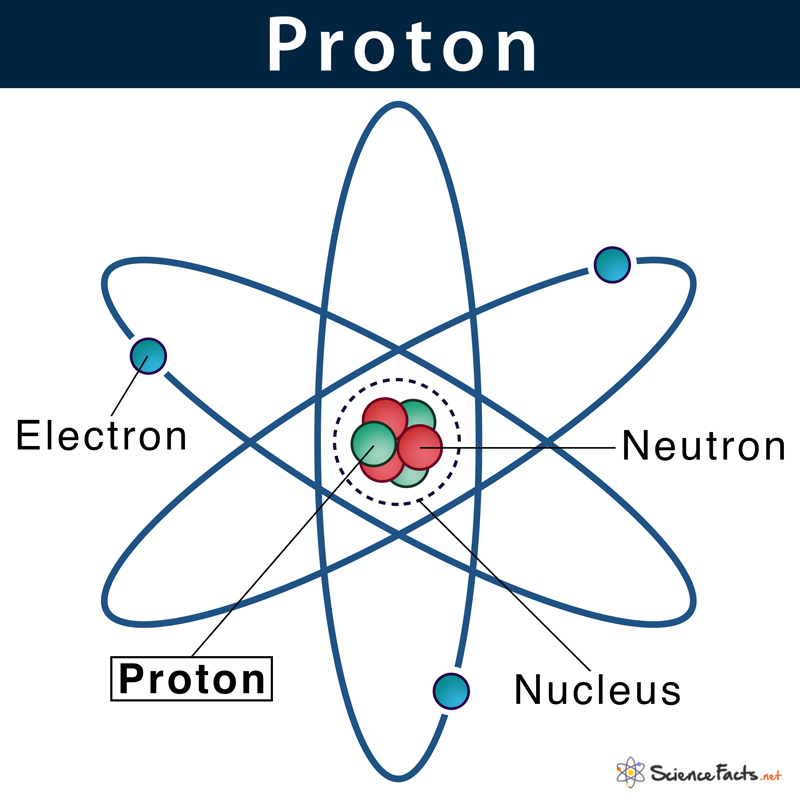The word ‘proton’ came from the Greek word meaning ‘first’. Ernest Rutherford used the term for the first time in 1920 to describe the nucleus of hydrogen. William Prout put discovered the existence of protons in 1815.
Who Discovered Proton
Where are they Located?
What are Protons Made of?
Characteristics
- Charge: Has a positive electrical charge of +1, which is equal and opposite in magnitude to the charge of an electron. Mathematically, charge on a proton is given as + 1.602 × 10-19 coulombs.
- Mass: It has a mass equal to that of a hydrogen atom. Mathematically, it has a mass of one atomic mass unit (amu), which is about 1.672 x 10-24 g. This weight is roughly 1,836 times the mass of an electron. Together with neutrons, they make up virtually all of the mass of an atom.
- Number in Atoms: Every nucleus of a given element has the same number of protons. The number of protons in an atom’s nucleus is equal to the number of negatively charged electron revolving around the nucleus. For example, the number of protons in the element Osmium is 76.
- Movement: They travel in a straight line and cast a shadow of the object placed in their path.
- Other: All protons are identical, meaning a proton of hydrogen is similar to Helium or any other elements. However, its number differs in different elements.
